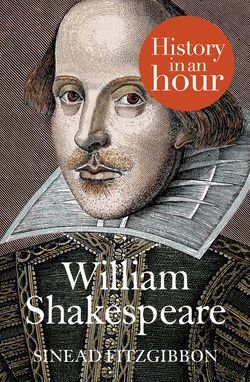Читать книгу William Shakespeare: History in an Hour - Sinead Fitzgibbon - Страница 8
The Jack-of-All-Trades
ОглавлениеFollowing the birth of the twins, we once again lose sight of William Shakespeare, this time for a period of seven years. When he next makes an appearance in his own story, it is 1592 and, at 28 years of age, he is no longer living in Warwickshire but in London. Again, we have no idea how the young father occupied his time during these so-called ‘lost years’, but nonetheless there have been various attempts to fill this gap in our knowledge. If the numerous theories are to be believed, Shakespeare was a highly adaptable polymath who was at once a schoolteacher, a poacher, a soldier, a traveller and a lawyer. There is scant evidence to support any of these suppositions, although recent investigations suggest the schoolteacher hypothesis is by far the most credible.
Nor do we have any insight into what influenced his decision to abandon his country roots and head for the overcrowded capital city. Perhaps it was the pressures of providing for his growing family, or simply a desire to make a name for himself beyond the provincial town of his birth. Whatever the reason, turn up in London he did, and by 1592 he was already ruffling some feathers in the theatre world, as evinced by a pamphlet published that same year by a man named Robert Greene.
In addition to being a poet and a keen pamphleteer, Greene was a leading light in the University Wits, a group of late-sixteenth-century Oxbridge-educated writers whose number also included the likes of Christopher Marlowe, Thomas Nashe, John Lyly and George Peele. He was also close to death, and very ill-tempered. So ill-tempered, in fact, he took advantage of his impending demise to issue two pamphlets which were ostensibly a collection of his observations on life, but which were in reality nothing more than barely disguised potshots at his fellow writers.
The first pamphlet, which was called Greene’s Groat’s-Worth of Wit, contains little of interest to the common modern reader – with the exception, that is, of this one sentence hidden away in a forest of purple Elizabethan prose:
There is an upstart Crow, beautified with our feathers, that with his Tygers heart wrapt in a Players hide, supposes he is as well able to bombast out a blank verse as the best of you; and being an absolute Iohannes fac totum, is in his own conceit the only Shake-scene in a country.
This rather catty comment is clearly taking a swipe at some ‘upstart’ actor (or ‘player’), who, despite being nothing more than a jack-of-all-trades (‘Johannes fac totum’), believes himself to be a better poet than his university-educated counterparts. But how do we know this jibe was aimed at Shakespeare? Apart from the obvious allusion to ‘Shake-scene’, the ‘tygers heart wrapt in a players hide’ is a direct reference to Henry VI, Part III, which includes the line, ‘O tiger’s heart wrapped in a woman’s hide!’
This is important in a number of ways. Not only is it the first time we come across William Shakespeare in London, it is also evidence that by 1592 he was quite well established there, having worked as both an actor and a playwright. It also proves the Henry VI plays were among the first of the Shakespearean canon to be written. And so, quite unwittingly, the cantankerous Greene has done the ‘upstart’ a great favour – without his splenetic death-bed ravings, our knowledge of Shakespeare’s movements during the early 1590s would be much the poorer.
Frontispiece of Greene’s pamphlet
But just as the man from Stratford had begun to garner attention for his theatre work, his dramatic career was brought to a rather abrupt halt. In June 1592, a particularly virulent outbreak of plague hit London. As was common practice at the time, the city authorities ordered the closure of all theatres in an attempt to prevent the contagion spreading among the already beleaguered population, an order which remained in place until June 1594.
During this enforced two-year sabbatical, Shakespeare turned his attention to poetry, writing his two long narrative poems, Venus and Adonis and The Rape of Lucrece. While this foray into poetry may well have been a welcome creative outlet for him, the poems also served a more practical purpose – in the absence of income from the theatres they earned the writer some much-needed money. These poems, both commercially successful, were dedicated to Henry Wriothesley, the Earl of Southampton, which suggests that, for the first and only time in his twenty-five year writing career, Shakespeare sought (and presumably received) aristocratic patronage.
